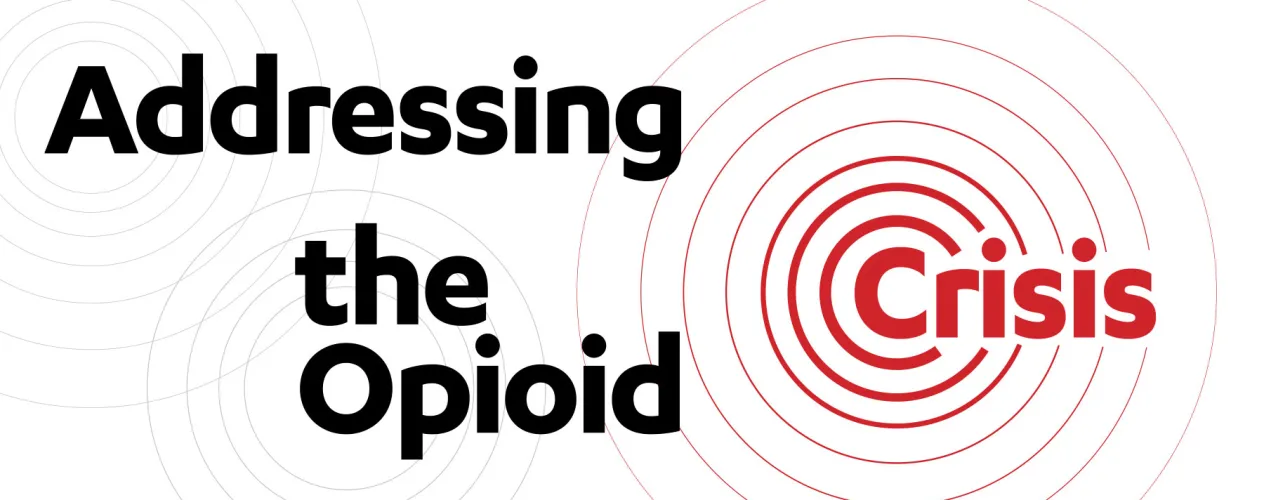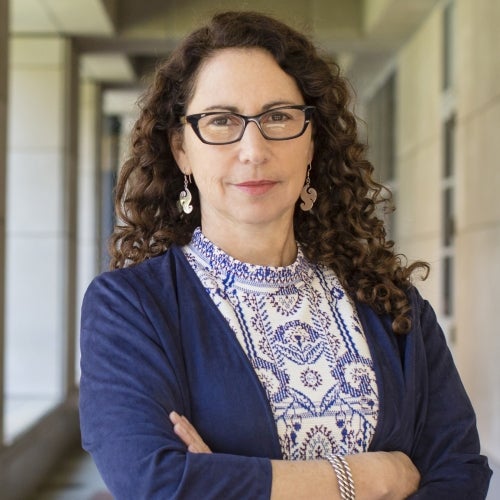Addressing the Opioid Crisis
An FSPH team is leading a key national resource in the fight against the U.S. opioid epidemic for populations affected by HIV/AIDS, and bringing together Southern California leaders for combined prevention efforts.

Unfortunately, this crisis has hit at a time when we’re working toward the elimination of HIV, and it represents one of the final major challenges to that goal.
AMERICA’S OPIOID EPIDEMIC, well into its third decade, continues to devastate individuals, families and communities.
In March, the U.S. Centers for Disease Control and Prevention (CDC) described what it calls the third wave of the public health crisis — a crisis that claimed nearly 400,000 lives nationally between 1999 and 2017. What started in the 1990s with prescription opioid painkillers was followed by a second wave, beginning in 2010, which was marked by increased heroin use as many who had become addicted to prescription pills began to seek out a substitute that was cheaper and easier to obtain. The third wave, traced to late 2013, is characterized by significant increases in overdose deaths involving synthetic opioids, particularly illicitly manufactured fentanyl.
If nothing is done, the CDC report concluded, as many as 650,000 more people will die from opioid overdoses in the next decade — more than the population of Baltimore.
“The opioid epidemic is affecting people across the spectrum — young and old, regardless of ethnicity or socioeconomic status,” says Pamina Gorbach, professor of epidemiology at the Fielding School. “Along with the terrible problem of overdose deaths, there can be long-term disabilities caused from the experience of being addicted, worsened for those who overdose repeatedly.”
For people who are HIV-positive or at high risk for HIV infection, the epidemic raises particular concerns, Gorbach notes. “Several states have reported outbreaks of HIV among injection drug users, pointing to the potential for opioid use to drive the HIV epidemic in highly vulnerable populations,” she explains. “In addition, people who use opioids may struggle with adherence to their HIV treatment, which can lead them to be able to transmit their HIV sexually or through sharing injection equipment.”
To learn more about the intersection of HIV and substance use, the National Institute on Drug Abuse (NIDA) brought together the research teams from its longstanding cohort studies to establish the Collaborating Consortium of Cohorts Producing NIDA Opportunities (C3PNO), under the leadership of Gorbach and Suzanne Siminski of the nonprofit data management and analysis organization Frontier Science. C3PNO includes cohort researchers with wide-ranging expertise and rich data repositories going back as far as 25 years, representing cities that have had varied experiences with the opioid epidemic. Through cutting-edge scientific approaches powered by nine cohorts’ combined sample size of more than 12,000 participants, C3PNO facilitates the study of high-priority research questions that would be difficult or impossible to address at a single study site.
“The work of C3PNO is foundational to measuring longterm consequences of addiction and which interventions have a public health impact,” says Amy Ragsdale, administrative director of FSPH’s Biobehavioral Assessment Research Center and C3PNO project director. “It’s helping us to learn from the experiences of other groups so that we can be nimble and responsive to this evolving epidemic.”
High on NIDA’s agenda for C3PNO is to contribute science that will be used to shape the agency’s public health messaging on HIV transmission for the injection-drug using population. Since 2016, the U=U (Undetectable Equals Untransmittable) campaign has promoted the evidence-based concept that people living with HIV are not at risk of sexually transmitting the virus if, through antiretroviral therapy, they maintain an undetectable viral load (the amount of HIV in the blood). “That message is transformative for people living with HIV because if they stay on their medications and in care, they can overcome the stigma of HIV and have less anxiety about transmitting the virus,” Gorbach says. “The question is, does substance use compromise either of the U’s? For drug users, injecting or not, it is harder to get to and keep an undetectable viral load, and we also know that HIV is transmittable through injection as well as sexually. Our charge is to investigate whether the U=U message should be modified for substance-using populations, especially for those using injection drugs.”
Gorbach, along with Steven Shoptaw, a UCLA professor of family medicine and psychiatry and biobehavioral sciences, are the principal investigators of mSTUDY, funded since 2013 by NIDA to learn more about the intersection of HIV and substance use in a cohort of young Los Angeles Latino and African-American men who have sex with men (MSM).
The FSPH-based study is one of the nine cohorts funded by NIDA in the U.S. and Canada that are collecting laboratory, clinical and behavioral data on substance use in HIV-positive and at-risk populations over time in C3PNO.
Gorbach notes that thus far, the opioid epidemic hasn’t exploded in Southern California the way it has in other parts of the country. In an effort to better understand the contours of the problem in the state and to determine the best strategies for preventing an outbreak mirroring what has occurred elsewhere, Gorbach, Shoptaw, and Ricky Bluthenthal, a professor and associate dean for social justice at USC’s Keck School of Medicine, convened a multidisciplinary group of experts at UCLA last November. The meeting, cosponsored by the UCLA Center for AIDS Research and UCLA Center for HIV Identification, Prevention and Treatment Services, included academics, public health officials, community service providers, and representatives from the U.S. Drug Enforcement Administration, Los Angeles County Department of Medical Examiner-Coroner, and L.A.-area crime labs.
In addition to reaching a consensus on the need for proven strategies such as expanding access to needle-exchange programs, medication-assisted treatment, and the opioid overdose- reversal drug naloxone, the group discussed some of the unique characteristics of the region’s at-risk population.
“In our study group young men who have sex with men tend to get exposed to fentanyl not through opioids but through stimulants,” Gorbach says. As part of the mSTUDY, her group is testing participants for fentanyl and surveying them to see if some are consuming it inadvertently, as well as providing educational materials and fentanyl test strips as a public health service so that members of the community can ensure that their supply doesn’t include the lethal ingredient. Gorbach believes a key lesson to be drawn from the way the opioid epidemic has unfolded is the importance of all sectors working together to identify and prevent potential outbreaks.
“The opioid crisis began with the overprescription of opioids, which led to many people moving on to use illicit substances, and public health didn’t move quickly enough to recognize the problem,” Gorbach says. “Unfortunately, this crisis has hit at a time when we’re working toward the elimination of HIV, and it represents one of the final major challenges to that goal. Through C3PNO, we can address high-priority research questions that will contribute to proactive steps to overcome that challenge.”
